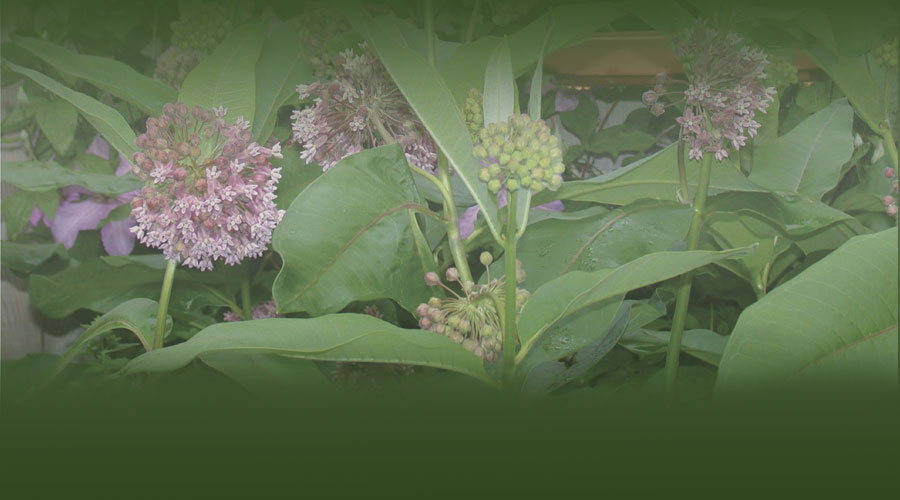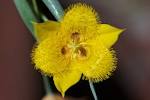Tulip and Lily Essences
Tulips, Star Tulips and other Lilies – a morphological & metaphysical Look at Essences from the Lily Family
If you are not a botanist you may wonder what tulips have to do with lilies. You may never have heard of Star Tulips either. As a matter of fact, many plants you would never suspect belong to the Lily family, like trilliums, onions, garlic, the yucca plant, Iris* and many others. These plants are worth looking at for their potential properties, particularly at this time of year.(This article was written in May.)
In general, members of the Lily family are amongst the first plants to bloom when spring arrives.
Amongst the Bach Flower Essences, Star of Bethlehem (Ornithogalum umbellatum) is the only essence made from a member of the Lily family. A characteristic of the members of the Lily family is that their petals form a six-pointed star or hexagram consisting of two intersecting triangles.
Star of Bethlehem is a key ingredient of Dr. Bach’s Rescue Remedy and helps coping with for physical or emotional shock. It reestablishes the original energy pattern when it has been broken through accident, trauma or years of abuse. In the language of symbolism the intersection of the two triangles in the hexagram was often seen as an expression of the inter-connection between body and soul, higher and lower, earth and heaven.
When our life experiences have damaged the wholeness of our original pattern, Star of Bethlehem can restore, soothe and comfort.
In other lilies, this pattern does not show through the presence of six petals, but in three petals and three sepals (the smaller green leaves underneath the petals forming the calyx).
Most lilies grow from bulbs, or sometimes from rhizomes like trilliums. We tend to think of the part of the plant that is under the earth as the root, but things are not that simple. The bulbs of tulips, onions, garlic etc. are not their roots. From the point of view of plant morphology the bulb represents a swollen shoot. The roots are the filaments we find at the bottom of the bulb. Look at an onion or garlic bulb and you will find something similar to short threads at the bottom. These- not the bulbs- are the roots.
It is water that makes the shoot bulge and give it is characteristic bulbous form, and because of this water-storing capacity, the bulb can survive self-contained on its own for a long time.
We came from the water. The earth was liquid before it solidified. Genesis speaks of the water which was there at the beginning. In Hebrew, the words for water and for heaven or sky are almost identical.
Water crystals, like the form expressed in the Lilies are hexagonal . Lilies touch on our origins, our beginnings.
In many cultural traditions lilies are associated with innocence, purity, receptivity, the archetype of the Mother with the child, or with an archetype of the feminine as such.
The lilies’ connection to the earth is loose, like that of the child which has just left behind the womb and the amniotic fluid. The bulb remains a self-contained sphere, similar to the womb. Like the womb and the female menses are connected to lunar qualities and cycles, so are the lily plants.
I invite you to take a closer look at two essences from the Lily family, Easter Lily and Star Tulip.
As a flower essence, Easter Lily is used when one experiences conflicts in regards to sexuality, including physical disturbances in the sexual organs. The kind of conflict and its physical manifestation which Easter Lily addresses relates in particular to a perceived or real split between sexuality and spirituality. Some people believe that in order to be spiritual one should avoid having any sexual life. If celibacy is experienced as an inner need and not imposed by a guilty conscience or a spiritual authority this may be just be the right thing. However, for many modern people this scenario does not fit.
And right here lies a unique chance for individual development in our day and age.
It is out of opposites that new things are born; discord and conflict are ideally resolved through creating a higher synthesis. Without the tension between opposites there is no development.
Man and woman are opposites – yet it is their union which brings a new being into the world.
A passage from Matthew Woods’ book Seven Herbs – Plants as Teachers is worth quoting in full:
“If we look at the petals of the Madonna or Easter Lily we will see that the union of opposites is portrayed in the structure of the plant itself. The petals are a beautiful, luminous, milky white, embodying the ideal of purity. At the same time the sexual parts of the flower protrude beyond the ends of the petals in an obvious and unabashed fashion. The male parts, the anthers are coated with an abundant, heavy golden pollen. The female part, the stigma, drips with a white exudate. Madonna Lily represents a picture of what would normally be considered opposites: purity and sexuality. Yet it is able to unite these under one vegetable roof.”
Easter Lily is a remedy par excellence for people suffering from the “nun-whore complex”.
I have also found that Easter Lily helps us our soul and spirit to be connect to our body and manifest our creativity. It is not for nothing that the words creation and and procreation are similar.
Easter Lily cleanses our attitudes and emotions from real and perceived impurities. I have seen it help in cases of prolonged menstrual bleeding connected to guilt feelings about sexual activity.
The Star Tulip (Calochortus tolmiei) belongs to the Calochortus – (Greek for: beautiful grass) clan of the Liliaceae. It is a native of Oregon and California and is also known under the name Cat’s Ears. To quote once more from Matthew Wood: “….every plant is a process, a story, an image.” When we know how to observe a plant, we can discover what is behind the image and thereby learn what the plant “is good for”
a native of Oregon and California and is also known under the name Cat’s Ears. To quote once more from Matthew Wood: “….every plant is a process, a story, an image.” When we know how to observe a plant, we can discover what is behind the image and thereby learn what the plant “is good for”
What does the image of the Star Tulip tell us? The triangular form is very pronounced, with one triangle being the dominant one, as opposed to the Star of Bethlehem or Easter Lily.
Coming back to the symbolism of the six-pointed star, this could indicate that it the triangle coming down from above is the dominant one. Star Tulip is a great opener to inner and higher worlds, to the realms of inspiration and intuition. When we have closed off our imagination because it doesn’t seem to fit into our age and education, or we had to shut down our receptive side for self-protection, Star Tulip can help to open doors that were shut long ago. It helps us to listen – look at the Cat’s Ear with all the hairs inside – to listen to what speaks from within, to the realm of intuition.
Star Tulip helps us to listen to the threshold between here and yonder, outer and inner. It restores sensitivity when it has been blunted. When we feel that there must be more to existence than we see but we feel shut off and don’t know how to get there, or when we feel are shut off from ourselves and f other people, Star Tulip can reconnect us.
Its cousin, the Yellow Star Tulip takes these qualities to another level. Here too the colour points the way. The gold of the petals has a much more radiating quality than that the mauve-grey of its more inward-oriented cousin.
Yellow Star Tulip helps to hear others. While it is not an essence primarily focused on improving communication, it helps to perceive and understand what the other person is feeling. This has nothing to do with losing one’s boundaries but rather with developing true empathy. First we need to be able to listen to ourselves, then we can be sensitive to others and hear them How often have you found it difficult to truly put yourself into somebody else’s shoes, to see the world through somebody else’s eyes, or even better, perceive the person behind the words?
We all know what it feels like not being heard and understood. And when others get on our nerves by their talking, then we know what it is like not being able to hear.
When non-hearing takes on pathological proportions we are faced with the phenomenon of the sociopath or psychopath.
The gifts of the Star Tulip are enormous.
Listening is where love begins: listening to ourselves and then
to our neighbours. Fred Rogers
* In more recent classification systems, some of these are classified under new categories like the Asparagaceae etc.
Literature
Wood, Matthew: Seven Herbs – Plants as teachers. North Atlantic Books, Berkeley, CA, 1987
Kaminski, Patricia & Katz, Richard: Flower Essence Repertory, Nevada City, CA, 1994



